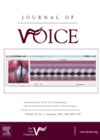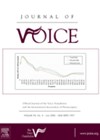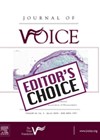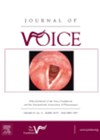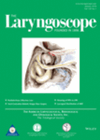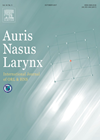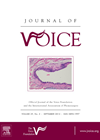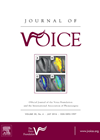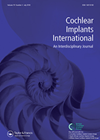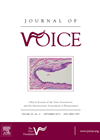
Journal Reviews
What is voice?
Voice is an area of clinical practice in speech and language therapy where there remains much debate, not only around the aetiology and classifications of voice disorders, but around the treatment of them. In general, it is accepted that ‘voice...
Multiple surgeries for RRP – does a greater number of operations result in a worse voice outcome?
Recurrent respiratory papillomatosis (RRP) of the larynx remains a challenging condition to treat, with a number of affected patients requiring multiple operations to remove recurrent disease over the course of their lifetime. At the most severe end of the spectrum,...
Speech analysis via mobile phone – is there an app for that?
Experienced ENT surgeons will often be able to discern the likelihood of significant laryngeal pathology in a patient referred with dysphonia by the sound of their voice during the initial history-taking phase of a consultation. With the move earlier in...
Vocal fold motion impairment following intubation – how likely is it to recover?
Ed’s Choice reviews a timely paper investigating prolonged intubation on vocal fold motion. The current scientific literature is dominated by studies examining COVID-19 and its widespread effects on health and healthcare delivery but will be old news by the time...
Long-term voice outcomes following transoral laser surgery versus radiotherapy for early laryngeal cancers
The oncological outcomes of transoral laser microsurgery (TOLM) for early laryngeal cancers are well-known to be very similar to radiation therapy (RT). The functional outcomes associated with each treatment modality are therefore of significant interest. This study is reported to...
Iatrogenic vocal fold paralysis – the time to recovery
Iatrogenic vocal fold paralysis can result from stretching, compression or complete transection of recurrent laryngeal or vagus nerves. These injuries are a significant source of concern for patients and clinicians alike. The question is how long should we wait for...
To monitor the nerves or not?
Whilst intraoperative nerve monitoring has become the standard of care for mastoid and parotid surgery, its benefit in thyroid surgery remains unclear. In the UK NICE was agnostic on the subject in 2008, stating that it was potentially helpful and...
What is the optimum duration of voice rest after microlaryngoscopy procedures?
Recent survey data looking at the opinions and practices of otolaryngologists in the US and the UK demonstrate that there is a wide variation in recommendations made for voice rest after vocal fold surgery. In the US, the most common...
Voice therapy is an effective treatment for presbyphonia
The quality of an individual’s voice often declines with age. This deterioration occurs firstly as a result of vocal fold atrophy secondary to histologic alteration of the vocal fold mucosa as well as atrophy of the laryngeal musculature. Phonatory efficiency...
Alcohol consumption and the risk of developing benign laryngeal disorders?
Alcohol consumption among South Korean adults is apparently high, with over three quarters of the adult population consuming alcohol and a ‘high-risk’ drinking rate of one in five. Excessive alcohol consumption is considered to be a risk factor for developing...
Do the modern multiple microphones with beamforming facility really help implantees?
In this study the authors aimed to assess the benefit beamforming multiple microphones provide to implantees. Speech reception thresholds were assessed in different situations; fixed masking noise from eight loudspeakers around the subject at 0°, ±45°, ±90°, ±135°, and 180°...
Spasmodic dysphonia – is greater awareness needed?
Spasmodic dysphonia (SD) is a focal dystonia of the laryngeal musculature. Previously considered to be a rare disorder, it has more recently been suggested that SD is in fact not rare but is frequently misdiagnosed or undiagnosed. This paper would...


